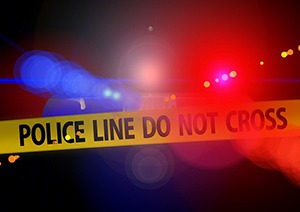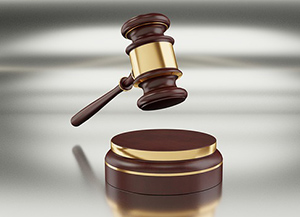Congratulations you have met your state’s minimum requirements to conceal carry a firearm. So What do you do next?
I Got My CCW Now What? How to carry. What kind of holster to use, belts where to get more training, plans, legal considerations and more.
I am going to make the assumption that you own the gun that you want to carry. You may have some experience with safe gun handling, but we are not just at the range anymore. Now you are out in public with additional considerations and responsibilities. What follows is a discussion based on my research and experience carrying a concealed weapon out in the world.
Now Right off I would like to point out I am not an attorney and nothing in this should be taken as legal advice.
Four Rules Of Safe Gun Handling Know and Practice Them.
- Treat every gun as if it is loaded.
- Keep your finger off the trigger until you are on target.
- Never point a gun at anything you don’t intend to shoot.
- Be sure of your target and what is beyond it.
You are responsible for every round that leaves your gun; there are no mulligans.
Probably the best place to start be is where on your body are you going to carry your gun. This may be partially determined by body shape and what is comfortable for you.
There is the adage the gun is supposed to be comforting, not comfortable. But with the wide array of holsters, available carrying can be comfortable. Most people will carry somewhere around their waistband but under your arm is also an option. Women have additional options such as a bra holster or in a handbag.
I personally am a fan of the appendix carry. That is on the front of the body just to the side of the belt buckle.
Next would be the four Oclock position this is just behind the hip.
The last and my least favorite is the small of the back carry. I say this is my least favorite because you cannot see your holster when you re-holster the gun. For safety reasons I am a big fan of looking at then holster as you place the gun back into it. All re-holstering should be done slowly, there are no awards for being the first one back in the holster.
Buying a holster
Many shooters have a box full of holsters that they bought and then abandon for something else. It doesn’t have to be this way. Once you are pretty sure where you are going to carry. You need to buy a holster that was designed for that position. This will narrow down the number of holsters that you will need to consider. Get on the internet and read reviews note the pros and cons of each design. Then head over to a gun shop that will allow you to try a few out. They should be able to offer some advice as well.
Three things that you must have in a holster
1 It must completely cover the trigger.
2 It must have some sort of retention system for the gun.
3 It needs to have a system to maintain the position of the holster.
Consider your Belt
Your belt is an important part of any waistband carry. It will need to be stiff enough to hold the gun and holster without drooping or twisting causing the butt of the gun to hang away from your body. This helps with both concealment and comfort. If you don’t typically wear belt you might consider the Belly Band style of holster.
Ammo

Your ammo obviously needs to be of the correct caliber for your firearm. Then you have an additional decision to make as to the type of bullet you will use.
The most common is the Full Metal Jacket (made famous by the movie of that name) this is however not recommended as the first choice for self-defense. FMJ is more suited to training and target practice.
The hollow point (HP) has long been a favorite for defensive purposes because of its ability to expand upon impact. They not only pack a punch but due to the expansion, they are less likely to exit out of the back of the target individual and strike an unintended person.
The poly tipped bullet; these are basically a hollow point with a synthetic plug in the hollow point on impact this plug acts as a wedge and is driven down inside the bullet causing it to expand somewhat resembling a flower. These like hollow points deliver a wound channel larger than the original caliber of the bullet.
Really if you use any ammo sold for self-defense by a major ammo manufacturer you will not go too far wrong.
Now that you are outfitted
You will need some range time. While shooting targets at the range is a good way to gain confidence in handling and familiarizing yourself with your gun’s operation. However, it has little to do with shooting an attacker under the stress of a life and death encounter.
This is where training with a qualified self-defense instructor comes in. Some ranges will sponsor workshops in a defensive shooting. You can also attend training at a dedicated facility offering advanced defensive shooting. Google self-defense handgun training you will find them across the country.
Have a plan

Now That you have decided to carry a firearm for self-defense or even if you keep one in the nightstand for home defense, you need to spend a little time planning under what circumstance you will use it.
Will it be that loudmouth drunk picking a fight on the sidewalk outside of the local bar? I can hear you now, Of course not, besides if he gets too obnoxious I’ll just lift my shirt so that he can see that I’m armed.
Congratulations you have just qualified in all 50 states for an aggravated assault charge. You may be at home later and the police show up to arrest you. You see that drunk called 911 and told them that you threatened him with a gun. Off you go.
I have even heard a guy say I carry a gun I don’t have to take crap off anyone. Really, if your a CCW or you live in a state that doesn’t require a permit and you carry a firearm; you have to take crap of everyone. The second you introduce a gun you open yourself up to criminal prosecution
Now let’s talk about that gun in the nightstand. I live in a split level house, all of the bedrooms are on the second level. If I hear a noise in the middle of the night do I go hunting through the house in the dark? NO, If I truly think someone is in my house I stay in the bedroom grab my trusty p320 and call 911. I tell them we have an intruder in the house. Stay on the phone with them. In a loud voice, I am going to ask who’s there? followed by do not come up these stairs I am armed. Remember we are on the phone with 911 they have just recorded my strong warning.
Now everything downstairs is insured and I’m not going to shoot anyone for a flat-screen. The odds are good that that bump in the night is a family member getting a snack or the family pet.
My pistol is equipped with a flashlight on the rail if I see a dim silhouette start up the stairs that light is coming on. I want to see for sure who this is The light is blinding but if it is an unknown person say with a knife in his hand things are going to escalate.
Your Attorney.

Hopefully, the chance that you will be involved in a life or death situation is pretty slim. But If you are involved in a shooting event the odds of the police allowing you to get in your car and go on your merry way are even slimmer.
Researching a good criminal attorney ahead of time is recommended. This is part of your just in case plan.
While keeping the phone number in your phone or the business card in your wallet might be a good idea to bear in mind that most attorney’s office hours are about 9-5. Most self-defense events happen outside of those hours and you only get one call.
So it might be a better idea to share your choice of attorney and the phone number with someone who will take your call at 2 am. They can then call the attorney on your behalf. That way if multiple calls needed the can do that.
Just a little food for thought
We are after all carrying weapons to be prepared for just such an event. Shouldn’t we take the time to truly have a plan?
Insurance
The attorney will require a retainer before he gets to work. That retainer can be rather hefty easily 30,000 or more just to prepare for trial. If it goes to trial it will require more, much, more The attorney keeps that win or lose.
This is where self-defense insurance comes in really handy. Without coverage, you may successfully win your self-defense case but still lose your house, car, and life savings.
I am not going to recommend any one insurance company but here are a few things to watch out for.
- They let you choose your own attorney.
- They are not insured by a company that may be swayed by the political climate.
- They do not hire network attorneys and pay a flat rate. Your case may require more than they will pay and none of there attorneys are willing to take it.
- You do not want a policy that reimburses you. That means you still have to come up with the money upfront. Many of these plans only reimburse you if you win.
I know all this attorney and insurance and use of weapon plan seems a little intimidating, but like a good Scout “Be Prepared”. Your CCW was just the first step.
I hope this has given you a few things to think about and that you have found it useful.